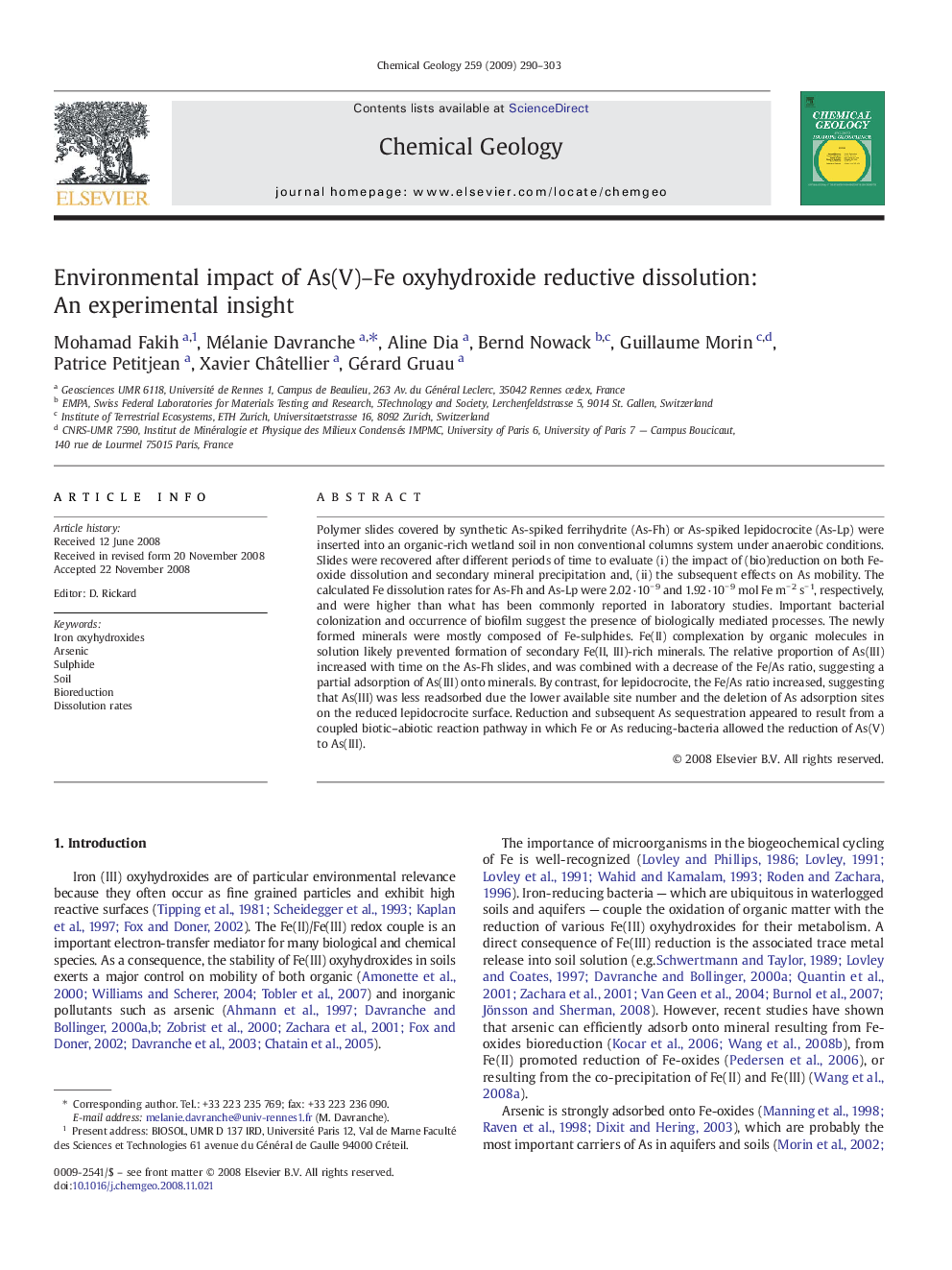| Article ID | Journal | Published Year | Pages | File Type |
|---|---|---|---|---|
| 4700411 | Chemical Geology | 2009 | 14 Pages |
Polymer slides covered by synthetic As-spiked ferrihydrite (As-Fh) or As-spiked lepidocrocite (As-Lp) were inserted into an organic-rich wetland soil in non conventional columns system under anaerobic conditions. Slides were recovered after different periods of time to evaluate (i) the impact of (bio)reduction on both Fe-oxide dissolution and secondary mineral precipitation and, (ii) the subsequent effects on As mobility. The calculated Fe dissolution rates for As-Fh and As-Lp were 2.02 · 10− 9 and 1.92 · 10− 9 mol Fe m− 2 s− 1, respectively, and were higher than what has been commonly reported in laboratory studies. Important bacterial colonization and occurrence of biofilm suggest the presence of biologically mediated processes. The newly formed minerals were mostly composed of Fe-sulphides. Fe(II) complexation by organic molecules in solution likely prevented formation of secondary Fe(II, III)-rich minerals. The relative proportion of As(III) increased with time on the As-Fh slides, and was combined with a decrease of the Fe/As ratio, suggesting a partial adsorption of As(III) onto minerals. By contrast, for lepidocrocite, the Fe/As ratio increased, suggesting that As(III) was less readsorbed due the lower available site number and the deletion of As adsorption sites on the reduced lepidocrocite surface. Reduction and subsequent As sequestration appeared to result from a coupled biotic–abiotic reaction pathway in which Fe or As reducing-bacteria allowed the reduction of As(V) to As(III).
